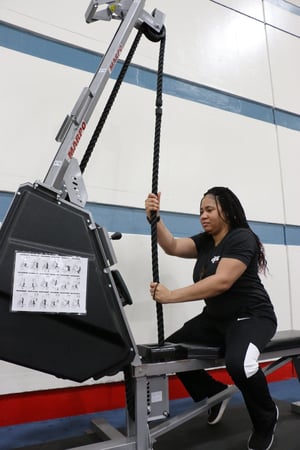 Ergometers have been a mainstay in the fitness world for a long time. You might not realize it, but many of the cardio pieces in your fitness center that you use regularly are ergometers. The arm ergometer comes from two Greek words: ergo, which means work, and metro or meter, which means measurement. In essence, any cardio equipment you have been using that has the capability to measure your workload can be considered an ergometer.
Ergometers have been a mainstay in the fitness world for a long time. You might not realize it, but many of the cardio pieces in your fitness center that you use regularly are ergometers. The arm ergometer comes from two Greek words: ergo, which means work, and metro or meter, which means measurement. In essence, any cardio equipment you have been using that has the capability to measure your workload can be considered an ergometer.
Because this is a wide spectrum of possibilities, we will focus on some pieces of equipment that fall into a subcategory, Upper-body Arm Ergometers (or UBE for short). I will give some professional tips and workout ideas to incorporate some great exercise into your program well into the new year.
NIFS has several options for UBE-minded people. For starters, the Marpo Rope Climb Machine, the Concept II SkiErg, and the Schwinn Air Bikes can each provide a nice, challenging upper-body cardio exercise. Because each machine specializes in its own fitness discipline (climbing, skiing, and biking), exercisers have an opportunity to not only do the exercises they love to do, but also try new pieces of equipment.
Rope Climbing Machine
Rope climbing is hard work, but quite beneficial. The main movers here are the Latissimus Dorsi, also known as the Lats; however, you can easily notice other muscles that work to support the movement, such as core and grip strength. Sometimes, though, this exercise is a little aggressive and you might not be ready to attempt a rope ascent. In this case, we can introduce you to the Marpo Rope Climbing Machine. This device can simulate various rope activities ranging from climbing the rope to a tug-of-war. Further, accessibility and versatility are both pluses. I like to use the rope machine for cardio on days that my legs are too sore to go, or if I am recovering from a lower-body injury.
Workout: I would suggest doing an interval of 30 seconds on, 30 seconds off for 4 to 5 rounds at the end of your workout. During the “go” time, be ready to work!
Concept II Ski Erg
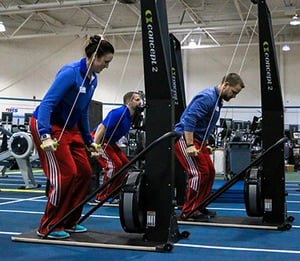 Another piece of UBE equipment you can find is the Concept II Ski Erg. The machine is designed to replicate cross-country skiing, but can also be used for upper-body only. For years, cross-country skiing has been associated with some of the most beneficial exercises in our industry. When snow is not in the forecast or if we lived far away from winter weather, it might be hard to come by a set of skis. The Ski Erg takes up a relatively small space and still gives a great workout. The Concept II machines are designed to take a lot of intensity while providing a good, safe workout.
Another piece of UBE equipment you can find is the Concept II Ski Erg. The machine is designed to replicate cross-country skiing, but can also be used for upper-body only. For years, cross-country skiing has been associated with some of the most beneficial exercises in our industry. When snow is not in the forecast or if we lived far away from winter weather, it might be hard to come by a set of skis. The Ski Erg takes up a relatively small space and still gives a great workout. The Concept II machines are designed to take a lot of intensity while providing a good, safe workout.
Workout: A quick workout could be as easy as measuring your quickest 1,000 meters and then trying to beat that time the next time you are at NIFS.
Air Bike
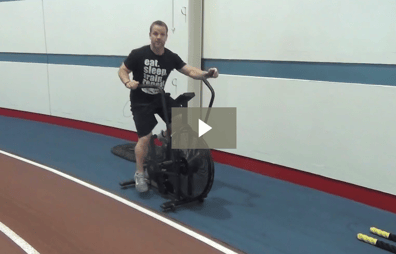 The final piece of equipment is the air bike. Bikes have been around for quite a while, but not all bikes are created equal. The air bike is fan driven, which means that the intensity you feel is based on your exercise output. Because it uses both your arms and legs, you get a full-body effect from the exercise. When muscles contract, not only are calories being burnt, but blood has to pump out to all those muscles, hence your heart rate increases. Ask anyone who has used the air bike and they will tell you that it could be one of the best challengers in the gym.
The final piece of equipment is the air bike. Bikes have been around for quite a while, but not all bikes are created equal. The air bike is fan driven, which means that the intensity you feel is based on your exercise output. Because it uses both your arms and legs, you get a full-body effect from the exercise. When muscles contract, not only are calories being burnt, but blood has to pump out to all those muscles, hence your heart rate increases. Ask anyone who has used the air bike and they will tell you that it could be one of the best challengers in the gym.
Workout: Use the bike as a warmup or a final finisher. I like to use the bike as a cool-down to keep the blood flowing and ease out of a hard workout. Try an 8–10-minute ride at moderate intensity at the end of your session.
***
For people who are injured or just want a great workout, the UBE equipment has something for everyone. NIFS provides support and will help you find the equipment and workouts that are appropriate for your goals and level of training. Train hard with equipment designed to push you to the limits.
If you are unsure about the UBE equipment, please stop and see a NIFS staff member to assist you with your needs. As always, keep working hard to achieve your goals, and don’t be afraid to try something a little different at the gym—you might end up loving it!
Like what you've just read? Click here to subscribe to our blog!
This blog was written by Thomas Livengood, NIFS Health Fitness Instructor and Personal Trainer. To read more about the other NIFS bloggers, click here.
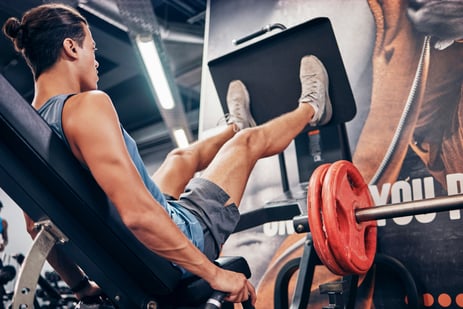 Conjugate training is a term coined and expanded upon by the late, great Louie Simmons, a well-known strength coach at Westside Barbell. Conjugate means to bring together, so conjugate training is literally joining together different training styles into one micro or meso training cycle. Conjugate training is bringing together training styles such as power, strength, agility, and hypertrophy into one training cycle.
Conjugate training is a term coined and expanded upon by the late, great Louie Simmons, a well-known strength coach at Westside Barbell. Conjugate means to bring together, so conjugate training is literally joining together different training styles into one micro or meso training cycle. Conjugate training is bringing together training styles such as power, strength, agility, and hypertrophy into one training cycle. 
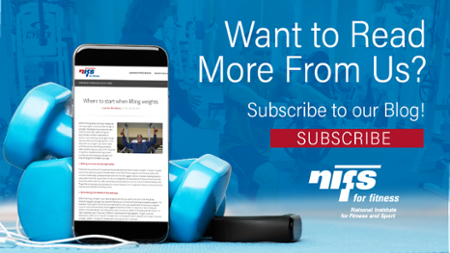
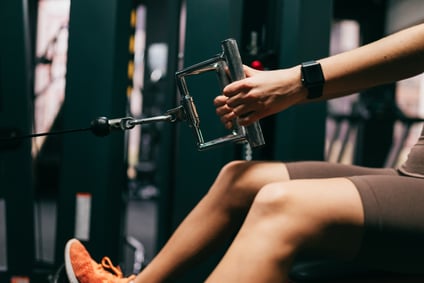 In this blog series, I have discussed
In this blog series, I have discussed 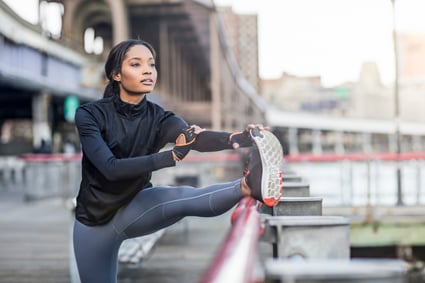 I am often asked what is a good warm-up routine, and my answer typically consists of, “it depends.” A warm-up is typically done at the beginning of a training session and involves low-intensity movements to help get your body ready. The reason I tend to say “it depends” is that your goals, limitations, and what kind of training you have planned for a specific day will dictate your optimal warm-up.
I am often asked what is a good warm-up routine, and my answer typically consists of, “it depends.” A warm-up is typically done at the beginning of a training session and involves low-intensity movements to help get your body ready. The reason I tend to say “it depends” is that your goals, limitations, and what kind of training you have planned for a specific day will dictate your optimal warm-up. 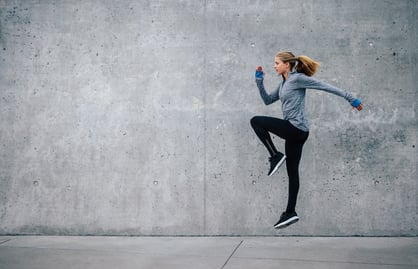 The “perfect” workout rarely happens. Every so often, you may have one of those training sessions where every block flows smoothly and programmed repetitions and sets are executed flawlessly. But for most days, there will be missed reps, you may feel more fatigued than you think you should, or the workout may not come together as you hoped it would. That is fine. Your goal should be to strive to be as close to perfect as possible, with the understanding that it may not always happen.
The “perfect” workout rarely happens. Every so often, you may have one of those training sessions where every block flows smoothly and programmed repetitions and sets are executed flawlessly. But for most days, there will be missed reps, you may feel more fatigued than you think you should, or the workout may not come together as you hoped it would. That is fine. Your goal should be to strive to be as close to perfect as possible, with the understanding that it may not always happen.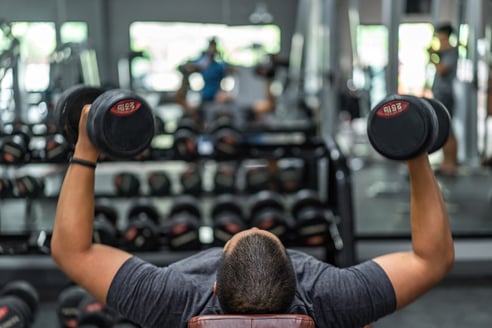 Let’s face it: building your own workouts isn’t always the easiest thing to do. Sure, you probably strike gold a few times a year and the exercises you choose seem to be flawless, from the balance of muscle groups worked to the flow of the routine that you get into. There is nothing better than having that program that just seems to get the job done.
Let’s face it: building your own workouts isn’t always the easiest thing to do. Sure, you probably strike gold a few times a year and the exercises you choose seem to be flawless, from the balance of muscle groups worked to the flow of the routine that you get into. There is nothing better than having that program that just seems to get the job done. 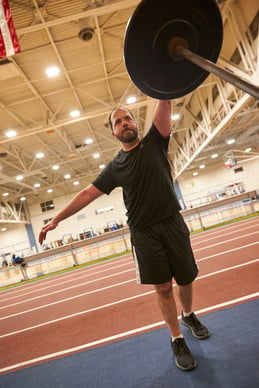 In my experience over the years working with folks from all walks of life to help improve their strength, mobility, performance, and overall fitness I have found that so many suffer from immobility in two major joints: the ankle and the shoulder, which is the focus of this piece. Lifestyle, occupation, inactivity, and overtraining are all culprits robbing so many of healthy range of motion in the shoulder and shoulder girdle.
In my experience over the years working with folks from all walks of life to help improve their strength, mobility, performance, and overall fitness I have found that so many suffer from immobility in two major joints: the ankle and the shoulder, which is the focus of this piece. Lifestyle, occupation, inactivity, and overtraining are all culprits robbing so many of healthy range of motion in the shoulder and shoulder girdle. 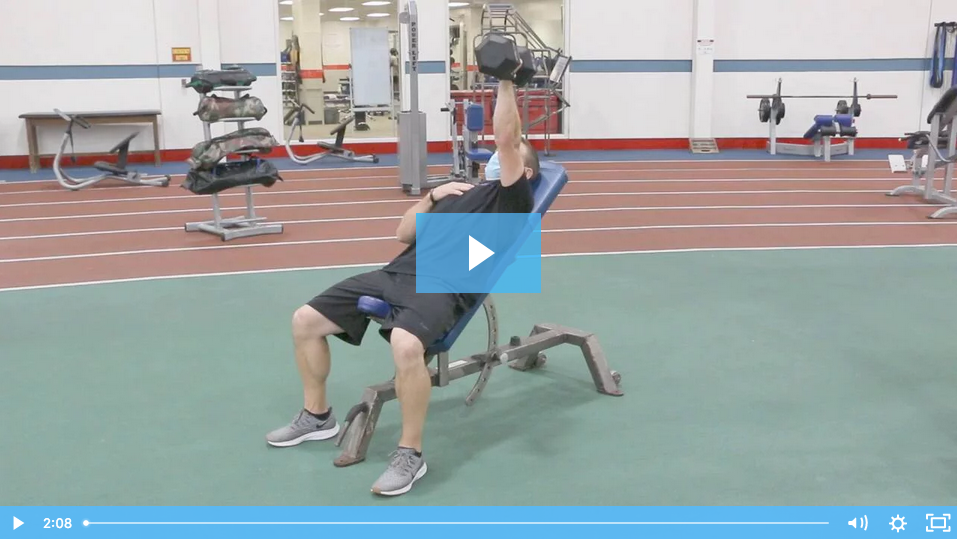
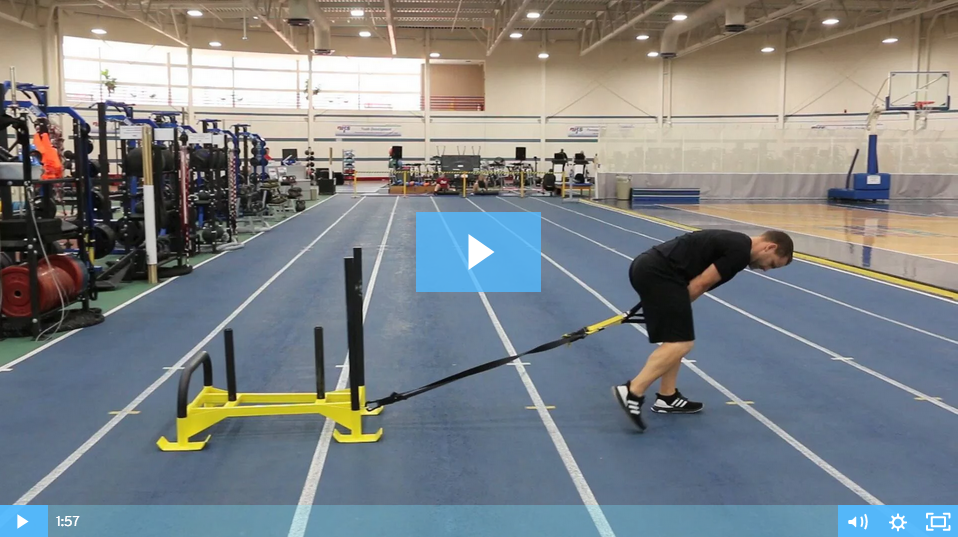
 Ergometers have been a mainstay in the fitness world for a long time. You might not realize it, but many of the cardio pieces in your fitness center that you use regularly are ergometers. The arm ergometer comes from two Greek words: ergo, which means work, and metro or meter, which means measurement. In essence, any cardio equipment you have been using that has the capability to measure your workload can be considered an ergometer.
Ergometers have been a mainstay in the fitness world for a long time. You might not realize it, but many of the cardio pieces in your fitness center that you use regularly are ergometers. The arm ergometer comes from two Greek words: ergo, which means work, and metro or meter, which means measurement. In essence, any cardio equipment you have been using that has the capability to measure your workload can be considered an ergometer. Another piece of UBE equipment you can find is the
Another piece of UBE equipment you can find is the 
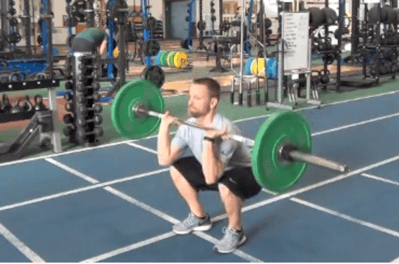 Burning more calories, developing more strength, and building the ultimate body in less time is an equation I think we can all get behind. In our world of “on-the-go” fitness—and, well, pretty much everything—finding ways to get more done in less time is a priority in many of our lives. But being effective and getting things done are two different things, in my opinion, and movement does not always result in progress. Being efficient and getting results at the same time in your fitness programming takes planning and choosing the best exercises for your desired outcomes.
Burning more calories, developing more strength, and building the ultimate body in less time is an equation I think we can all get behind. In our world of “on-the-go” fitness—and, well, pretty much everything—finding ways to get more done in less time is a priority in many of our lives. But being effective and getting things done are two different things, in my opinion, and movement does not always result in progress. Being efficient and getting results at the same time in your fitness programming takes planning and choosing the best exercises for your desired outcomes.